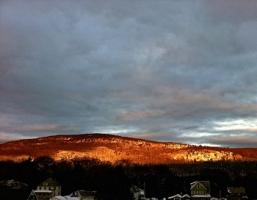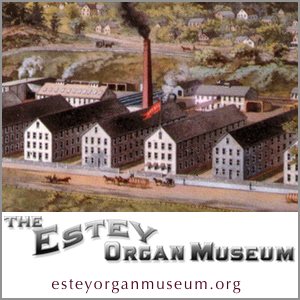
I’m a local fellow with a great interest in the context and culture of this area prior to its becoming the Brattleboro we know today. Meaning, the vast sweep of 12,000 years preceding the past 250 or so; the Sokoki of the Western Abenaki were here for centuries and their ancestors for millenia before them. And, it must be affirmed, their descendants are still among us.
By way of honoring this land and its people, I would like to help acknowledge and document this heritage and raise awareness to engender respect. It struck me that this gathering of the minds might be a reasonable venue within which to inquire about likemindedness. Anyone else with such an inclination?
There have been many (but not all, perhaps) in the past who have, in their zeal or fascination, done great harm by indiscriminate collecting and removal of objects and context, albeit with or without intent. Even greater has been the development and exploitation of the natural terrain through benightedness or even firm conviction. This is not my intent; I am of the persuasion that the hardest task is to learn what one does not know and then go from there. We’re talking about people here, and a landscape unique unto itself – and there’s the magic. If you get what I mean, we’re almost on the same page. This deserves to be examined and honored.
I regret placing this under “History” but it seemed the best match for an ill-fitting shoe.



PreBratt
I think this is a great idea.
Most of the pre-Brattleboro materials I’ve seen deal with geology and climate, and not much about the people who were using the area, other than mentions of people passing through.
How do you plan to proceed?
PreBratt Procession
Chris –
Yours is probably an accurate assessment of the state of things. I’ve started with an ongoing search of the written record for local mentions of the very early days (Fort Dummer, etc.) and, likewise, am developing a firm background in Abenaki (and their predecessors’) culture and land use patterns. I want to develop my awareness and train my eye to see what was, and is, here under the veneer of our New England civilization.
I would like to know if there are others who have existing knowledge, or would like to join in, as I start to build a knowledge base to substantiate this aspect of the region’s heritage. I want to be in close contact with the appropriate governmental agencies, to substantiate and validate the results to some degree. It might end up being incorporated in the Town or Regional Plan or similar documents, somewhere that matters… The dearth of acknowledgement is quite astounding, but in fact is rather typical of most of New England and certainly Vermont in particular.
Birds and the River
As one who spends a lot of time paddling on that river, this link [Where Are The Brattleboro and Guilford Petroglyphs?] may not substantiate the ‘history’ you are elucidating, but it’s my path of affinity with that time frame and world view.
River-Centric
Spinoza, I agree – the rivers were and are the nexus of life here. It is one of the primary lenses through which worlds may be glimpsed. I am familiar with that linked article, authored by Rolf, and with the source material from which he quotes. This is exactly the sort of evidence I am seeking to compile, all in one spot, and “build this case.” All with an eye toward appreciation and respect in our current and future relationships with this land and its inhabitants (of all stripes and spots).
Town Plan acknowledgements
During past online research, I had been able to find references to Brattleboro’s archaeological heritage in the Town Plan, as well as a few other places. I recently noticed some of those search results have vanished and I just realized the reason. The new 2013 Town Plan has basically written them out. There is one tiny paragraph of three sentences acknowledging any pre-colonial settlement – the general impression is that the lack of awareness continues to become institutionalized. The lack of truth becomes the truth. I regret that I was not aware of this when the Plan was being prepared. It’s a little dismaying.
Following is the sole excerpt:
With an abundance of water resources and productive
soils, Brattleboro was inhabited by prehistoric and Native
Americans. As a result, present-day Brattleboro holds
several treasures of the past. The Vermont Division for
Historic Preservation has identified several significant archaeological
sites in Brattleboro: one in the Fort Dummer
Park; petroglyphs in the West River (Indian Rock); one on
the Connecticut River behind Adair Heights; and along the
West River where an old cement bridge was once located.
Where The Great River Rises
You might want to track down a copy of “Where The Great River Rises,” an atlas of the Connecticut River Watershed.
It has all sorts of information about the geology and geography, planet, fish, animals… and humans.
Here’s a bit from the start of the chapter on “Native Space”:
“For the Alnobak who are indigenous to the abundant intervals and forested mountains of the Kwanitekw, this “long river” has always been a center of adaptation, subsistence, and exchange. While the settlers of Vermont and New Hampshire designated this river as a boundary, within Native Space, Kwanitekw has operated as a major trade corridor, travel route, and gathering place for indigenous families. It represents a nexus of life in Wobanaki, the land of the dawn.”
There are lists of Abenaki place names, with translations.
It’s not a tremendous amount of information, but it is useful.
River sources
Thank you for the lead Chris – I will look for that. I have been lent a copy of a similar anthology centered around Monadnock which has some very nice early material in it. A chapter by anthropologist Marge Bruchac, herself of Abenaki heritage, has some insightful commentary. She has a perspective which holds that recent versions of history, right up to the current day, is a form of colonialism – in that if a heritage is ignored or overwritten, it is an easy task to marginalize its people. I think Brattleboro can be better than that.
Resources?
Rich,
You may have already ‘been there, done that’ but I might suggest a visit to the Brooks Library (on Tuesday) and specifically inquiring as to what might be available in the History & Genealogy Room. A search for ‘Abenaki’ in the online catalog via the website brookslibraryvt.org also brings up some general info, some available through the Catamount library network.The Reference Librarian may have access to other inter-library resources, as well.
http://brookslibraryvt.org/search/subject-guides2/local-history-and-genealogy
Some references which may be of some help:
https://files.acrobat.com/a/preview/47f68c64-3ee6-4956-b8cd-7974977eff87
https://files.acrobat.com/a/preview/f8d759d8-c0fb-4c81-8b0d-da197f698a64
I would be interested in your endeavors as they take shape.
Brooks of course
RobertOeser, thank you. Brooks has always been an excellent resource and I will continue to explore its offerings and services. There’s even a small exhibit of local lithics (stone points) collected by Gordon Crandall ten years ago, mounted in the window of the local history room. I will pursue that lead as well. I will endeavor to keep you posted as to any progress I enjoy.
On another note, I recently met with local author Stuart Strothman, whose historical novel Sackett does a wonderful job at weaving together a few local facets of very early recorded local history with the Abenaki and allied cultures. I believe the library has a copy and you can obtain your own by going to the facebook page for “Sackett.” I recommend it; the natural world of our Connecticut River valley figures very prominently in his story and I am delighted as I discover each reference.
Thanks Bob!
New blog on this topic: Sokoki Sojourn
For those who may be interested, I decided to make the leap and begin Sokoki Sojourn, a WordPress blog where I will cache various observations and experiences here in the southern Abenaki homeland. It will be centered around Brattleboro, travelling north and south, east and west, following the land and watersheds. If you’re interested, please stop in… I am just getting it set up now and will be adding posts regularly, often with photography. Thanks for joining me!
https://sokokisojourn.wordpress.com/2015/02/24/confluence/
Contemporary Indigenous Presence
“The Nolumbeka Project will be the beneficiary of the Free Soup & Games Night on Monday March 2, from 5 – 7:30 p.m. at Hope & Olive, 44 Hope Street, Greenfield, MA. The Nolumbeka Project is a non-profit organization dedicated to the preservation of the history of New England Native Americans/American Indians through educational programs, art, history, music, heritage seed preservation, sacred landscape documentation, and cultural events. Donations from the event will help bring Native American performers to the 2nd Annual Pocumtuck Homelands Festival on August 1, 2015; fund research to document Native American cultural resources in the path of development; further improvements of the traditional Circle Gardens at Wissatinnewag;continue Educational & Cultural programs. For more information about the Nolumbeka Project, go to http://www.nolumbekaproject@gmail.com or Facebook.com/Nolumbeka Project.”
Also look up Joe Graveline in Northfield.
Nolumbeka Project
Will Stomp – Thank you for that direction! I will follow up and make their acquaintance soon, hopefully at Monday’s event. I did not know about the Nolumbeka Project at all; it’s amazing how things begin to fall into place when one is receptive.
The project
That sounds interesting. I wonder if they have had, or plan to do, any events in Brattleboro?
Nolumbeka tonight
Planning on attending the Hope and Olive event tonight, to scope out the scene and hopefully meet a couple organizers.
Hope and Olive fundraiser
There was a great turnout in Greenfield last night for Nolumbeka. I was able to speak with several of the members in attendance – Joe Graveline, Howard Clark, David Brule, Strong Oak, Lisa and Pam. They were welcoming and friendly; seems they have very little interaction with folks in Vermont, which I found interesting… One of their areas of immediate focus, Peskeompscut (Turners Falls, which they call Wissitinnewag) was a neutral gathering place for fishingfor many thousands of years. Area tribal bands would gather there in the spring to share the bounty of the migrating salmon and shad; Pocomtuk, Nipmuc, Nonotuck, Mahican, and Sokoki, among others would come together to harvest and celebrate. Given that Sokoki territory edged this resource (today’s state boundaries are meaningless in this regard), they were very much present as part of the larger group. Nolumbeka is interested in exploring this idea.
Interesting
That sound similar to how the West River/Connecticut intersection had been used here. Some think the area up behind the ski jump might have been a gathering place.
Good fishing, for sure. We have reports from not that long ago of enough salmon in the West River to be able to walk across them.